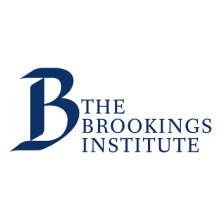
Twice in this still-young century central banks have had to take steps, unprecedented in size and scope, to limit the economic fallout from financial instability. While we can’t expect a financial system to withstand an overnight shut down of the global economy like we experienced in March 2020 without support from central banks and fiscal authorities, the financial market turmoil at that time highlighted vulnerabilities that were visible well beforehand. The system is stronger than it was going into the Global Financial Crisis (GFC), but much remains to be done, especially in nonbank finance. I’m going to reflect on some of the actions that need to be taken, drawing on the recent recommendations of a Task Force on Financial Stability in the U.S. that I co-chaired, and on my experience as an external member of the Financial Policy Committee at the Bank of England.
My main points are:
- Dealing with risks to financial stability is urgent. If the economic and financial situation evolves as seems to be expected in financial markets, credit should flow, and financial markets will continue to serve the needs of the economy. But the current situation is replete with fat tails—unusually large risks of the unexpected which, if they come to pass, could result in the financial system amplifying shocks, putting the economy at risk. Shoring up our defenses against financial instability can’t run on Federal Reserve or, even worse, FSOC time where near endless analysis and consensus building delay needed action for years.
- Dodd-Frank and Basel reforms have greatly improved the resilience of the banking system. Still, I have two linked recommendations for banks. First, fix the Supplementary Leverage Ratio and perhaps some other post GFC regulations so they don’t impede market making in Treasury securities and related repo; second, improve risk-based capital regulation by utilizing a countercyclical capital buffer that builds bank capital in good times and releases it aftershocks.
- There’s much more to do in nonbank or market finance. This was the focus of our Task Force and we ended up with a 135-page report with dozens of recommendations. I’m going to focus on the Treasury market, but many aspects of market finance need urgent attention.
- Our regulatory processes and procedures need to adapt to provide more nimble, more transparent, more accountable responses to ever-evolving threats to financial stability. We must do a better job of spotting potential problems early and making concrete suggestions for dealing with them.
Read the full text here.


